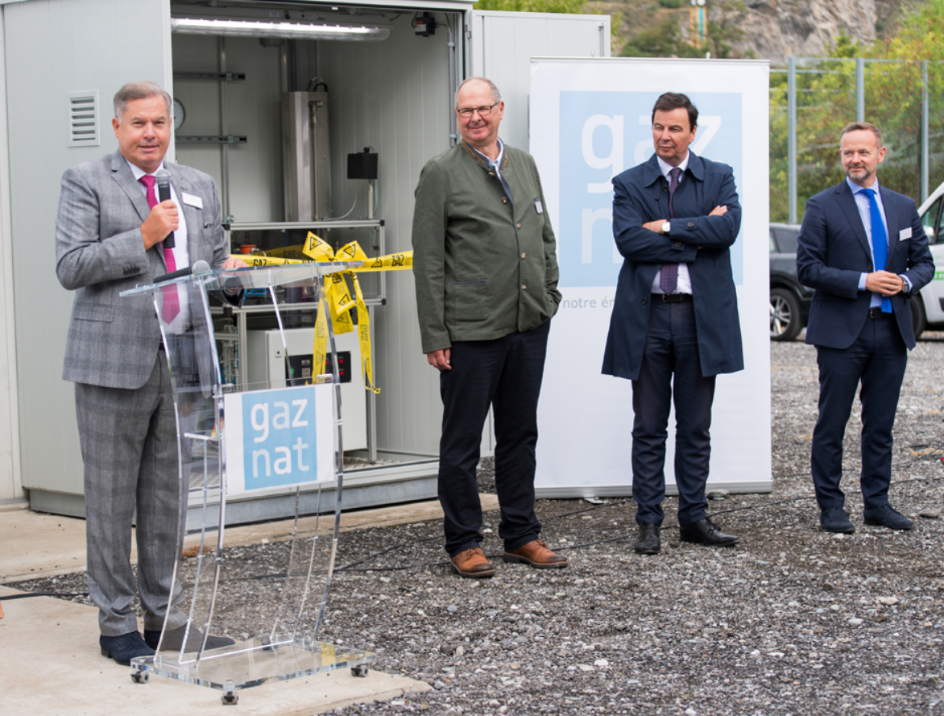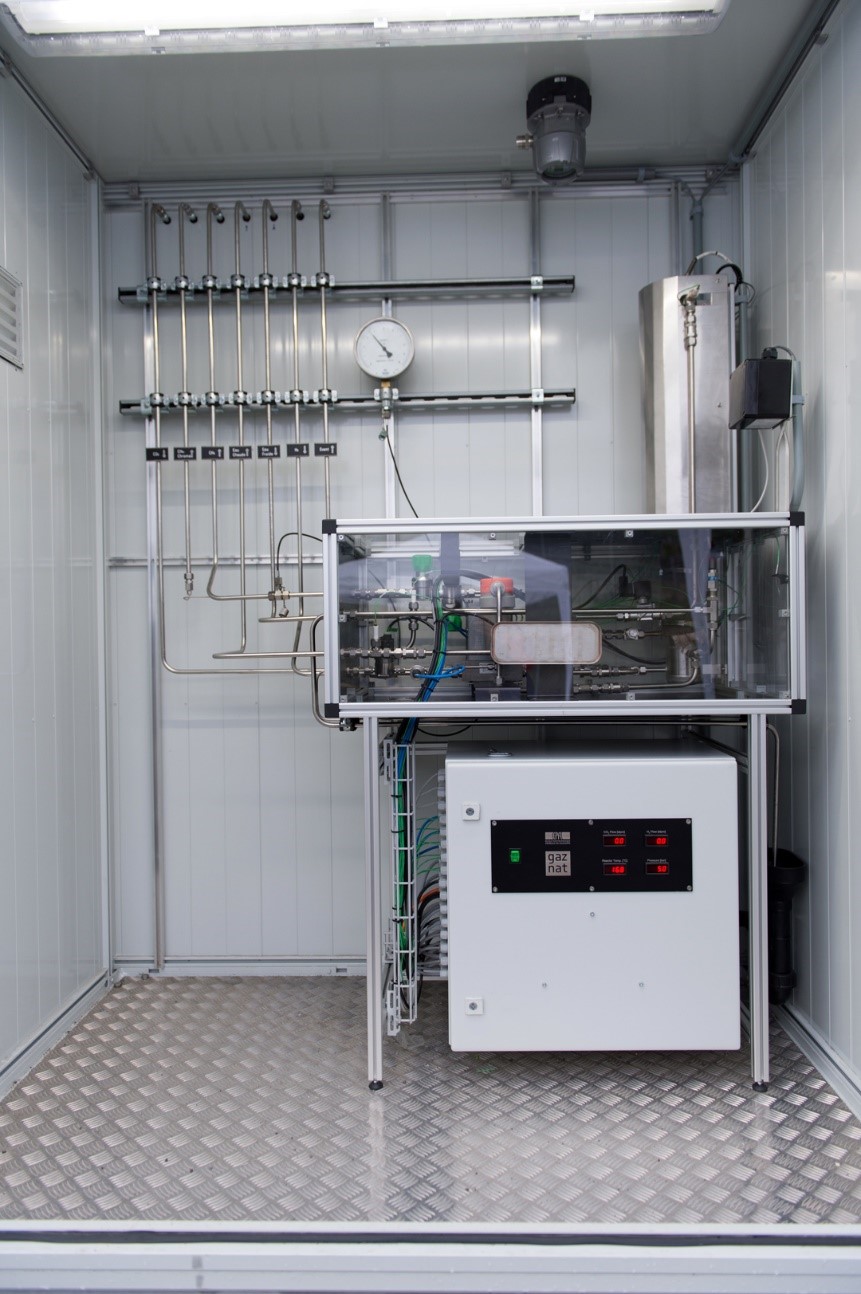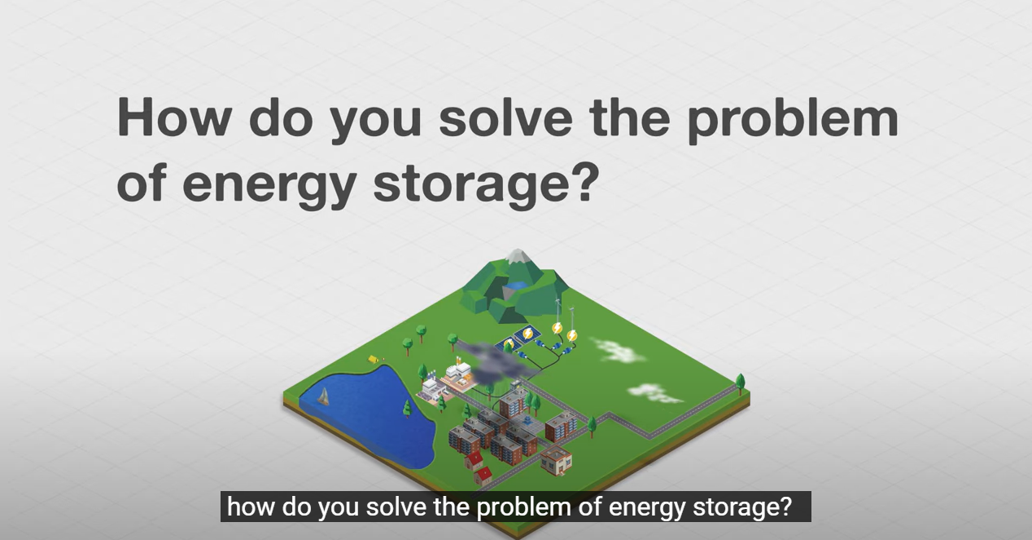Power-to-Gas project
What is Power-to-Gas?
Power-to-Gas (also known as PtG) uses excess renewable electricity to produce hydrogen or synthetic methane through a methanation process. This contributes to overcome two current limitations of renewable energies: storage and transportation.
The production of renewable electricity, from hydroelectric dams, solar panels or wind farms, is excessive during the summer months, followed by a steep decrease in winter, when energy demand rises. Thus, storing this excess summer production of renewable electricity represents a major challenge to the achievement of a decarbonized energy mix. With Power-to-Gas, this excess can be converted into carbon-neutral synthetic methane, and easily stored within the gas networks. European storage capacities are quite significant (around 100 milliard m3, which roughly equates to 25% of the EU’s yearly gas consumption).
This renewable gas can then be consumed locally or quickly transported throughout Europe thanks to large natural gas pipeline networks (there are over 200 000 km of high-pressure pipelines in Europe, with 2'250 km in Switzerland).
The methane reactor of the Metering and Regulation (M&R) station in Sion
Since September 2020, Gaznat has been testing a methane reactor at its metering and regulation station (M&R) in Sion. This reactor is integrated into a Power-to-Gas project and converts over 99% of previously captured CO2. This installation, unique in Switzerland, was realized in partnership with the Swiss Federal Institute of Technology Lausanne (EPFL) Valais-Wallis and the financial support of Innosuisse; it is the result of 3 years of research and developmental work by Prof. Andreas Züttel, director of the Laboratory of Materials for Renewable Energy (LMER) and his team. The official inauguration took place on September 25, 2020, with the attendance of partners EPFL, OIKEN, and the President of the City of Sion.

Operating principles
The reactor converts renewable electricity into hydrogen through electrolysis. Then, through methanation process, it combines the hydrogen with CO2 to produce synthetic methane, which is in turn injected into OIKEN's distribution network. Currently, the CO2 used for this process is captured from an industrial site and bottled.

The following diagram presents the successive stages, further detailed in our article from Aqua&Gas magazine (in French) focusing on the reactor:
"Using renewable electricity (1) and water, the electrolyzer (2) produces hydrogen. This hydrogen is then injected into the methanation reactor, as is the CO2 (3), captured on an industrial site and stored in bottles. A catalytic reaction inside the reactor produces in turn synthetic methane (the "Sabatier reaction"), possessing the same attributes as natural gas. This synthetic methane, produced at a rate of 0,72 kg/h (11 kWh), is then directly injected into the distribution network, and recognized as carbon-neutral gas. Moreover, the heat energy, dissipated by the electrolyzer (2) and the reactor (4) is entirely captured and used to pre-heat the gas before its expansion (5).

The sizing of this infrastructure was designed with the objective of producing synthetic methane in flat volumes almost all year-long, which amounts to around 79'000 kWh and saves around 140'00 kWh of pre-heating energy per year.”
Objectives & Developments
Gaznat developed this project with the objective to achieve carbon neutrality at one of its M&R stations, and thus reduce its environmental impact while demonstrating the viability of Power-to-Gas technology for the industry. After the success of this first pilot project, Gaznat is now evaluating the possibility to equip other M&R stations with similar reactors.
In the medium term, the goal is to be able to produce renewable energy continuously at an industrial scale, which could then be put to other uses. Hence, Gaznat has renewed its support to Prof. Züttel and EPFL, and is committed to build a reactor 20 times more powerful (225 kW) than the prototype in Sion; this reactor would then be commercialized on a large scale, given its high CO2 conversion rate and its superior efficiency to other products currently available on the market. GRZ Technologies, a start-up specializing in hydrogen infrastructure, will also contribute to the project.
In the future, the objective will be to combine the technology of the reactor with technologies developed by EPFL and supported through the Gaznat chairs - such as graphene membrane nanopores - to capture CO2 directly from combustion flow on carbon dioxide-emitting installations. This will make the infrastructures even more efficient and sustainable.
Learn more about Power-to-Gas and its use at the Sion M&R station:
WATCH THE VIDEO HERE (in French):
T
To learn more about methanation,
WATCH THE VIDEO BROADCASTED BY EPFL BELOW:

GreenGas and its Innovation Lab
On August 30, 2023, Gaznat officially inaugurated its Innovation Lab at the Dispatching Center in Aigle, which is part of a first-of-its-kind energy project in western Switzerland called GreenGas.
It is the largest industrial-scale laboratory for the development of CO2-neutral renewable gases.
The Innovation Lab is the fruit of intense collaboration between Gaznat and EPFL and its spin-off GRZ Technologies, a cooperation that has brought to maturity two innovations ready for industrial-scale testing: the methanation reactor and nanopore graphene membranes.
Visit the Innovation section to find out more about GreenGas.
WATCH THE GREENGAS PROJECT LAUNCH VIDEO :
